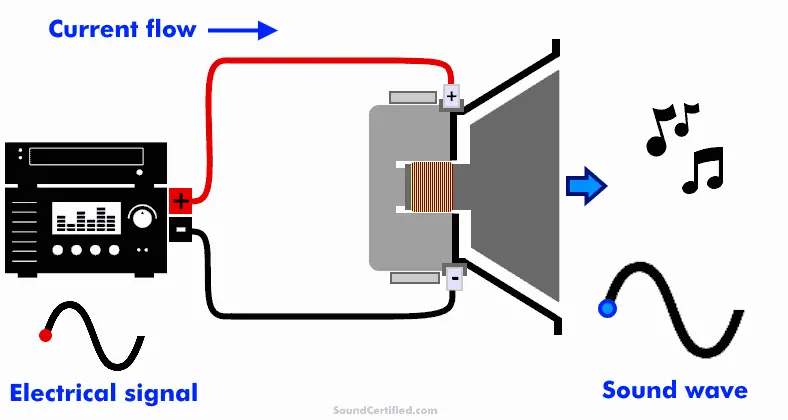Basics of Speakers
- DJ Z

- Feb 28
- 4 min read

Speakers are used for different purposes. Speakers are commonly used for school functions, weddings, public events, parties, watching movies, meetings, and for personal enjoyment, speakers play a crucial role in audio reproduction.
Speaker Types

While there are many types of speakers available, they generally fall into three primary categories based on their intended use and design. Each type has its own unique features and applications, making them suitable for different environments and listening experiences.
1. Portable Speakers
Portable speakers are among the most commonly used speakers today. They include Bluetooth speakers and are designed for convenience, mobility, and wireless connectivity. Many portable speakers come with waterproofing, long battery life, and extra bass features for outdoor and travel use.
Recommended Portable Speaker Brands:
Sony – High-fidelity sound with EXTRA BASS models like the Sony SRS-XB series.
JBL – Owned by Harman (Samsung), offering waterproof, deep bass models like the Flip, Charge, and Xtreme series.
Bose – Premium sound quality with balanced audio, featuring models like SoundLink Revolve and Bose Portable Smart Speaker.
Altec Lansing – Rugged and waterproof designs like the LifeJacket series
Professional PA Speakers
Professional PA (Public Address) speakers are mainly used by DJs, schools, venues, and corporations for live sound reinforcement at ceremonies and events. PA systems are more advanced than regular speakers as they can handle multiple audio sources, blend them into a unified mix, and amplify them effectively.
Recommended Professional PA Speaker Brands:
Yamaha – Reliable and balanced sound, with DXR, DZR, and DBR series offering FIR-X tuning and Class-D amplification.
JBL – Powerful and versatile, with EON, PRX, and SRX series featuring Bluetooth, DSP, and high SPL for live sound.
QSC – High-performance speakers like the K, KW, and CP series, known for DMT technology and advanced DSP.
Electro-Voice (EV) – Precision sound with ZLX, ELX, and EKX series, recognized for tight bass and durable builds.
Home Theater Speakers
Home theater speakers come in different configurations, such as soundbars, bookshelf speakers, floor-standing speakers, and built-in systems. These speakers create immersive audio experiences for movies, music, and gaming.
Recommended Home Theater Speaker Brands:
Bose – Rich, immersive audio with Smart Soundbars and Home Speaker series, featuring sleek designs and clarity.
JBL – Dynamic, bass-heavy sound with PartyBox and Bar series, great for music lovers and home theaters.
Sonos – Wireless, multi-room audio with models like One, Beam, and Arc, offering seamless smart home integration.
Polk – Affordable, high-quality sound with Signature and MagniFi series, delivering deep bass and crisp dialogue.
More Speaker Varieties
Beyond these three main types, many other speakers serve specific functions, including:
Studio Monitors – Used in music production for accurate sound reproduction.
In-Wall & Ceiling Speakers – Installed for home automation and hidden audio setups.
Smart Speakers – AI-powered devices like Amazon Echo and Google Nest.
Anyone can create a speaker, but in most scenarios consumers look for reliable manufactures who specialize in speakers. Here are some speaker manufactures DJ Z recommends. A blog about recommended speakers from DJ Z is coming soon!
Key components of a speaker

There are also several basic components of a speaker. A typical loudspeaker is made up of several key components, each of which plays a specific role in converting electrical signals into sound.
1. Tweeter
Emits mid to high frequencies, usually from 2 kHz to 20 kHz.
Responsible for clarity and detail in music and speech.
Typically made from materials like silk, metal, or ceramic to achieve different tonal characteristics.
2. Woofer
Emits low frequencies, producing bass in the range of 20 Hz to 2 kHz.
The most noticeable part of the speaker for most listeners, responsible for depth and impact in sound.
Usually constructed from paper, plastic, or composite materials to balance durability and performance.
3. Midrange Driver (if applicable)
Handles frequencies between 250 Hz and 2 kHz.
Crucial for reproducing vocals and instruments with high accuracy.
Found in multi-way speaker systems where audio clarity is paramount.
4. Speaker Cabinet
The enclosure that houses the speaker components.
Designed to reduce unwanted resonance and improve sound projection.
Can be ported (bass reflex) for deeper bass or sealed for tighter sound control.
5. Voice Coil
A coil of wire that moves within a magnetic field to create sound vibrations.
Determines speaker sensitivity and power handling.
Usually made from lightweight materials like aluminum or copper.
6. Magnet
Works with the voice coil to create motion and generate sound.
Larger magnets typically contribute to stronger, more powerful sound reproduction.
7. Amplifier
Powers the speaker and ties all components together.
Converts weak audio signals into strong signals that drive the speaker components.
Built-in for powered (active) speakers or external for passive speakers.
How Speakers Work: The 5-Step Process

The process of how a speaker produces sound is broken down in 5 basic steps.
Electrical Signal Input
An amplifier sends an electrical audio signal to the speaker.
Electromagnetic Interaction
When the electrical signal passes through the coil, it creates a magnetic field that interacts with the permanent magnet.
Movement of the Voice Coil & Cone
The movement follows the pattern of the electrical signal, meaning higher frequencies move the cone quickly, while lower frequencies move it more slowly.
Air Compression & Sound Waves
As the cone moves forward, it pushes air particles together (compression) When it moves backward, it pulls air particles apart (rarefaction) This creates sound waves that travel through the air and reach our ears.
Repeat
After the 4 steps the process restarts and begins again. This process is almost near-Instantaneous. The time it occurs is microseconds (µs)—that's millionths of a second.
For more information about speakers and other audio equipment, visit my website: www.dj-z.org






Comments